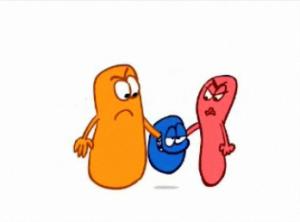|
Related Topics: |
|
|
|
Current News |
|
Chemistry A to Z |
|
About Internetchemistry |
New Antioxidant System Protects Single Cysteine |
|
ANN ARBOR, Mich. - We've all read studies about the health benefits of having a life partner. The same thing is true at the molecular level, where amino acids known as cysteines are much more vulnerable to damage when single than when paired up with other cysteines. Now, researchers at the University of Michigan, along with colleagues in Belgium, have discovered a new antioxidant system that protects single cysteines. The research appeared in the Nov. 20, 2009 issue of the journal Science. |
|
Our body's proteins, which are made up of amino acids and perform essential roles, can be injured by reactive species known as oxidants. Over time, the injuries can lead to cancer, heart disease, Alzheimer's disease and other serious medical conditions. To guard against such harm, our cells have special proteins that can repair or reverse oxidative damage. But until now, no such repair system had been identified for single cysteines, which are particularly susceptible to the damage. In the current research, U-M's Kate Carroll and colleagues used previously developed chemical probes to investigate and nail down the mechanism involved. "Our results reveal that a protein called DsbG serves this precise function in the periplasmic compartment in bacteria, protecting single cysteines residues from hyperoxidation and inactivation," said Carroll, an assistant professor of chemistry and a research assistant professor in the Life Sciences Institute. The periplasmic compartment is a space between the inner and outer membranes of bacteria such as Escherichia coli, which were used in this study. Although human cells have no periplasmic compartment, they have an equivalent membrane network called the endoplasmic reticulum. "Since proteins from the DsbG family are widespread and have been identified in the majority of genomes including humans, some of these related members may play similar roles in controlling cysteine oxidation," Carroll said. A better understanding of these biological processes may lead to more effective antioxidant therapies. Carroll's coauthors on the paper are Matthieu Depuydt, Katleen Denoncin and Jean-François Collet of the Université catholique de Louvain and the Brussels Center for Redox Biology; University of Michigan graduate student Stephen Leonard; Didier Vertommen and Pierre Morsomme of the Université catholique de Louvain; and Khadija Wahni and Joris Messens of Vrije Universiteit Brussel and Brussels Center for Redox Biology. |
|
|
|

